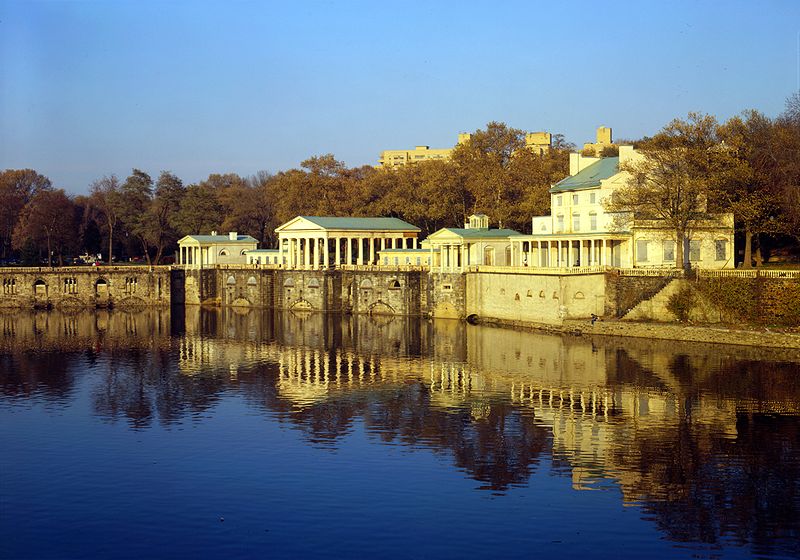After an initial difficulty in attracting customers (who were used to getting their water from public pumps and private wells and cisterns), Philadelphia's waterworks soon couldn't keep up with demand. John Davis and Frederick Graff designed a complete remodeling of the system in 1811 so that it could supply the city's growing needs.
The decision to create the Philadelphia Municipal Water Supply was a direct response to several disastrous yellow fever epidemics that brought tragedy to the city in the 1790s. Philadelphia's wells were described as "extremely offensive and unwholesome" and were considered the source of the water supply's pollution. Still the capital at that time, Philadelphia was the nation's largest, most important city.
Engineer and architect Benjamin Latrobe moved to Philadelphia in 1799 to design the Bank of Pennsylvania, and he soon began to advocate a plan to solve the city's water problems. He proposed pumping water from the Schuylkill River into an adjacent settling basin and conveying it from there to Centre Square. Then the water would be pumped up 50 feet to two wooden tanks; these would provide the head to allow water to flow by gravity throughout the city in a system of distribution pipes. This plan was adopted and Philadelphia created one of the first major municipal waterworks to use steam-powered pumping methods.
Facts
- The system's primary building material was wood. The water mains, pipes, pumps, flywheels, and piston shafts were all made of wood. Even the fireboxes in the coal-burning boilers were wooden, though lined with iron plates.
- Construction of the system began in 1799 and operation started in 1801.
- After an initial difficulty in attracting customers (who were used to getting their water from public pumps and private wells and cisterns), Philadelphia's waterworks soon could not meet the need. John Davis and Frederick Graff designed a complete remodeling of the system in 1811 so that it could supply the city's growing demand.
- With steam power proving too expensive to operate, the Fairmount plant was converted to waterpower in 1822. He designed a low-head dam across the Schuylkill and modifications to the waterworks to house as many as eight wheels, which would drive new pumps. Three water wheels and pumps proved sufficient for the initial scale of operations.
- To meet increased demand, a new pumping station was built on the Schuylkill, at a place called Faire-Mount, about a mile upstream from the original pumping plant. Two pumps were installed at the Fairmount Waterworks -- one was new and one was relocated from the Centre Square Works, which eventually would be abandoned.
- The pumps lifted water from the river to a new reservoir on nearby Morris Hill. From there, water could flow by gravity through the city's distribution system. 7. Construction of the Fairmount Waterworks began in 1812 and began service in 1817.
- In 1827, Latrobe's Center Square Works building was demolished, leaving the Fairmount facility as the only surviving emblem of this significant advancement in municipal water supply.



